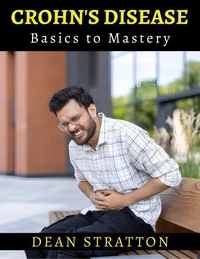From foundational biology through advanced therapeutics, this comprehensive guide clarifies how epithelial, germ cell, and sex cord-stromal tumors differ in origin, behavior, and care. Readers learn risk factors (age, hereditary syndromes such as BRCA1/2 and Lynch), protective strategies (oral contraceptives and risk-reducing salpingo-oophorectomy in appropriate candidates), early symptom patterns (bloating, pelvic pressure, early satiety), evaluation (history, examination, transvaginal ultrasound, judicious tumor markers), why routine screening is not recommended at average risk, and how FIGO staging directs surgery, chemotherapy, targeted therapy, and surveillance.
Step-by-step chapters cover primary cytoreduction versus neoadjuvant pathways, platinum-taxane backbones, PARP inhibitors and anti-angiogenics, survivorship, fertility preservation, palliative integration, and multidisciplinary coordination. Realistic case vignettes, checklists, and flowcharts turn complex decisions into clear actions for trainees, nurses, and busy clinicians.? Evidence maps and algorithms for initial workup, staging, and treatment sequencing? Practical surgical planning: when to attempt complete cytoreduction and when to use neoadjuvant therapy? Genetics made usable: testing pathways, consent language, cascade counseling, and risk reduction? Drug tables linking mechanisms to indications, dosing, toxicities, and monitoring? Recurrence playbook: defining platinum sensitivity, maintenance options, and clinical-trial windows? Communication tools: symptom diaries, shared decisions, survivorship, and end-of-life planning
From foundational biology through advanced therapeutics, this comprehensive guide clarifies how epithelial, germ cell, and sex cord-stromal tumors differ in origin, behavior, and care. Readers learn risk factors (age, hereditary syndromes such as BRCA1/2 and Lynch), protective strategies (oral contraceptives and risk-reducing salpingo-oophorectomy in appropriate candidates), early symptom patterns (bloating, pelvic pressure, early satiety), evaluation (history, examination, transvaginal ultrasound, judicious tumor markers), why routine screening is not recommended at average risk, and how FIGO staging directs surgery, chemotherapy, targeted therapy, and surveillance.
Step-by-step chapters cover primary cytoreduction versus neoadjuvant pathways, platinum-taxane backbones, PARP inhibitors and anti-angiogenics, survivorship, fertility preservation, palliative integration, and multidisciplinary coordination. Realistic case vignettes, checklists, and flowcharts turn complex decisions into clear actions for trainees, nurses, and busy clinicians.? Evidence maps and algorithms for initial workup, staging, and treatment sequencing? Practical surgical planning: when to attempt complete cytoreduction and when to use neoadjuvant therapy? Genetics made usable: testing pathways, consent language, cascade counseling, and risk reduction? Drug tables linking mechanisms to indications, dosing, toxicities, and monitoring? Recurrence playbook: defining platinum sensitivity, maintenance options, and clinical-trial windows? Communication tools: symptom diaries, shared decisions, survivorship, and end-of-life planning

 , qui est-ce ?
, qui est-ce ?